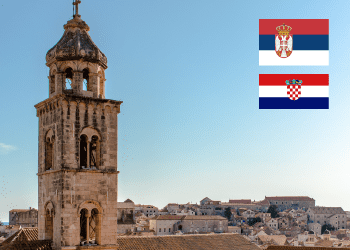Revision of national IP laws in Croatia and Serbia

On February 1, 2020, Serbia introduced a new Trademark Law, a move that was followed by Croatia on February 20, 2020, with the implementation of a revised Patent Act.
Serbia has long been preparing for the implementation of the law, which brings novelties to the national trademark registration procedure, in a bid to bring further compliance with the European trademark system.
The most important addition based on the EU trademark law is the opposition procedure that can be initiated by the holder of a prior registered similar trademark. The procedure for filing of an opposition follows the EU model in that the period starts with the publication of an application in the Official Gazette and lasts three months. In turn, the applicant may request a proof of use from the opposing party confirming the trademark in question has been used on the territory of Serbia for the last five years. The opposition system will coexist with the examination as to relative grounds for refusal conducted by the Intellectual Property Office of the Republic of Serbia.
In addition, the new Trademark Law allows for an easier filing of trademark infringement cases and eliminates the graphical representation requirement.
As for Croatia, the country has also been preparing to implement the new Patent Act for quite a time. The Act brings about multiple changes with the consensual patent being replaced by the utility model and obligatory prior search for patents being introduced.
As per the IP office website, binding state of the art search should save applicants from the unnecessary expenses in case the invention doesn’t comply with the basic requirements of patentability.
The introduction of the utility model has the same aim of making the system more transparent and favourable for the applicants. Utility model applications won’t be checked as to novelty, inventive step or industrial applicability by default. The inventions in the sphere of biotechnology, chemistry and pharmacy are excluded from the utility model subject matter. However, the examination may be conducted at the applicant’s request filed not later than by the end of the seventh year from the filing date. The term of utility model protection is ten years from the filing date of the application.
To recap, a tendency of bringing more clarity and compliance with international standards into the national legislation is extending to a greater number of countries each year.